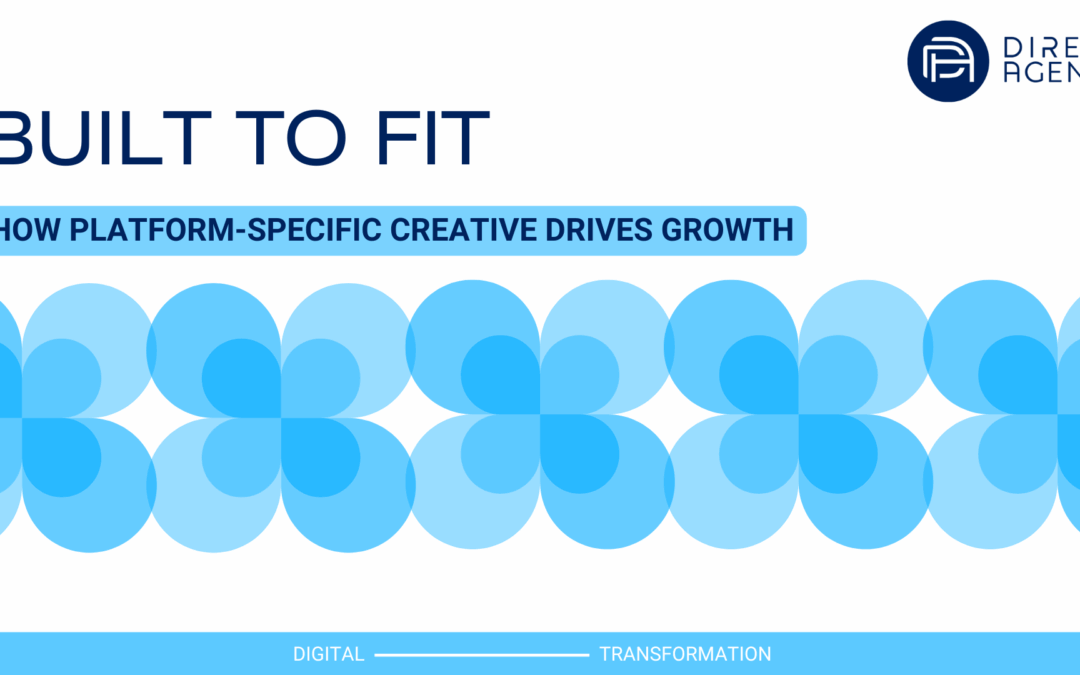As marketing leaders lock in their priorities for the remainder of 2025, one principle is emerging across the board: platform-specific creative is not a luxury. It is essential for performance.
The acceleration of channel fragmentation and audience expectations has transformed how we think about content. What works on TikTok doesn’t resonate on LinkedIn. What drives engagement on Instagram may fall flat on YouTube and vice versa. Yet many brands are still developing creative in isolation and repurposing it across platforms. The result is wasted media dollars and missed opportunities for deeper audience connection.
Creative that is built to fit its environment (native in tone, format, and function) is what drives relevance, efficiency, and ultimately, results.
The Shift
Marketing used to rely on the efficiency of a single hero asset, resized and reformatted for every placement. But today’s audiences demand more. They expect content that meets them where they are, in the language of the platform they are on. TikTok calls for fast, unfiltered storytelling with creator energy. Instagram rewards visual fluency and UGC that feels personal and scroll-stopping. YouTube performs best when narratives are emotionally resonant or highly educational. LinkedIn expects thought-driven content that delivers value to a professional audience. Each platform plays a distinct role in the customer journey. Designing creative to fit those roles is not about adding complexity. It is about increasing precision.
The Challenge
For marketing teams, scaling platform-specific creative often feels like a resource strain. Creative, media, and brand teams are still working in silos, which slows things down and makes alignment harder. Most workflows weren’t built for flexibility or fast cross-platform versioning. So teams take shortcuts, and performance takes the hit. The pressure is only growing. As media costs climb and platforms prioritize relevance, brands can’t afford to run content that doesn’t match the environment it’s in.
Efficiency is a Creative Advantage
While the need for platform-specific creative is clear, the perceived cost and complexity often hold teams back. The solution isn’t to dramatically increase production volume; it’s to rethink how content is made. Efficiency comes from building flexible systems: modular creative that can be quickly tailored by platform, using automation and AI where possible, and reducing redundant iterations. When teams embed creative thinking earlier in the planning process and design assets with adaptability in mind, they can scale precision without scaling effort or cost.
The Opportunity
Creative has always been a differentiator. Now, it is a multiplier. When content is designed for the specific behaviors, expectations, and dynamics of each platform, brands see more than just improved engagement. They see lower CPAs, higher conversion rates, and faster optimization cycles.
The opportunity is not just about output. It is about building a system that allows teams to develop creative assets with intention, flexibility, and speed. By investing in the right strategy and structure, organizations can produce content that performs across audiences, formats, and channels without sacrificing quality.
Winning Strategies in Action
Marketing organizations seeing the strongest returns are the ones rethinking creative at a foundational level. They are designing frameworks that allow for quick-turn content that still maintains brand consistency. They are embedding creative considerations early in the media planning process. They are leaning into lo-fi and high-performing creator content to complement polished brand assets. Brands are testing and learning continuously, with data-driven feedback loops.
This is not about producing more content. It is about producing the right content, shaped by performance insights and platform fluency.
For leaders, the takeaway is clear. Creative is no longer a final deliverable. It is a strategic lever that impacts brand value, media efficiency, and customer experience.
As the lines between media, creative, and performance blur, marketing leaders must ensure their teams and partners are structured for integration. The brands that lead in this next chapter will be the ones who build systems that connect insight, storytelling, and speed.
The Road Forward
The demand for platform-specific creative is only increasing. As channels evolve and audience expectations shift, brands will need more than just compelling content. They will need a strategy that connects creative, media, and measurement from the ground up.
Direct Agents Studio helps brands bridge that gap. We partner with our clients’ in-house teams to streamline production, tailor messaging by platform, and build creative systems that scale with agility.
If you’re rethinking how to scale content across channels without sacrificing performance, let’s talk. If you would like to get in touch with one of our experts or learn more about our capabilities, please contact [email protected].

